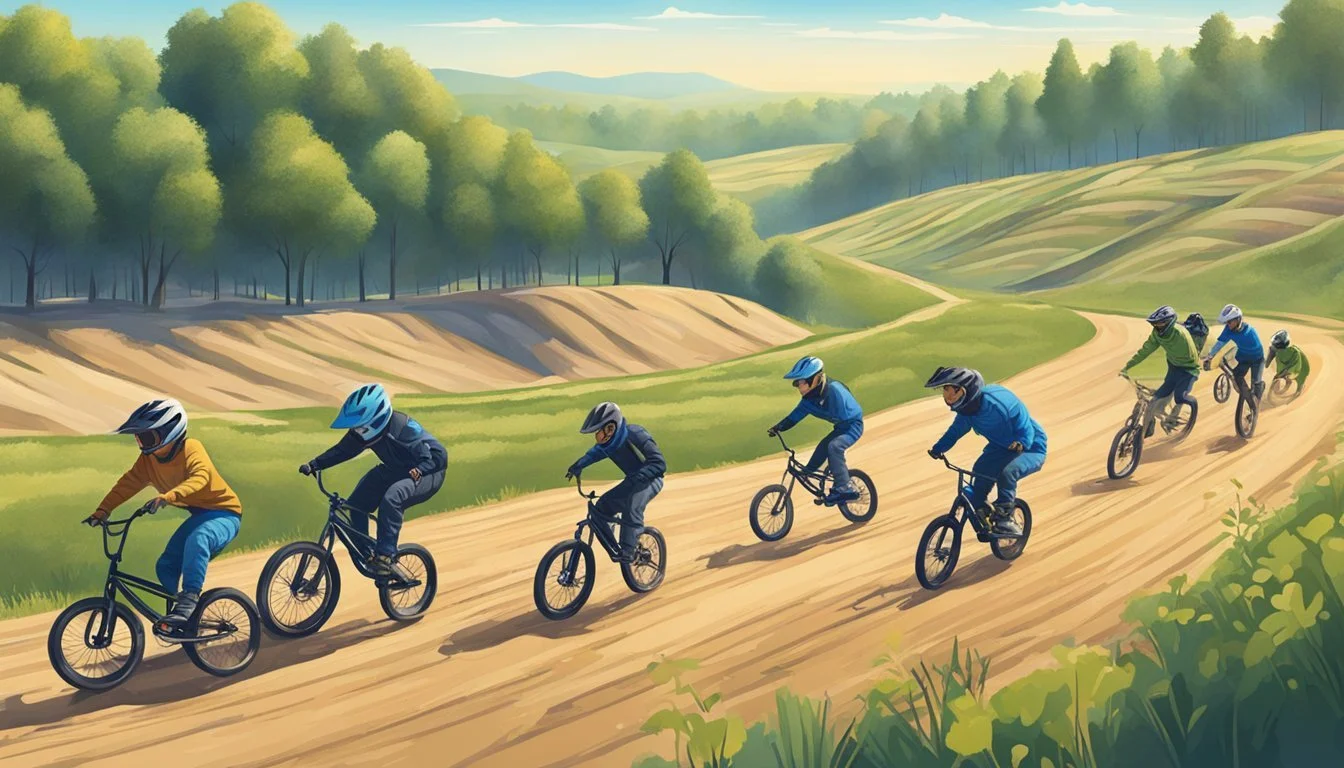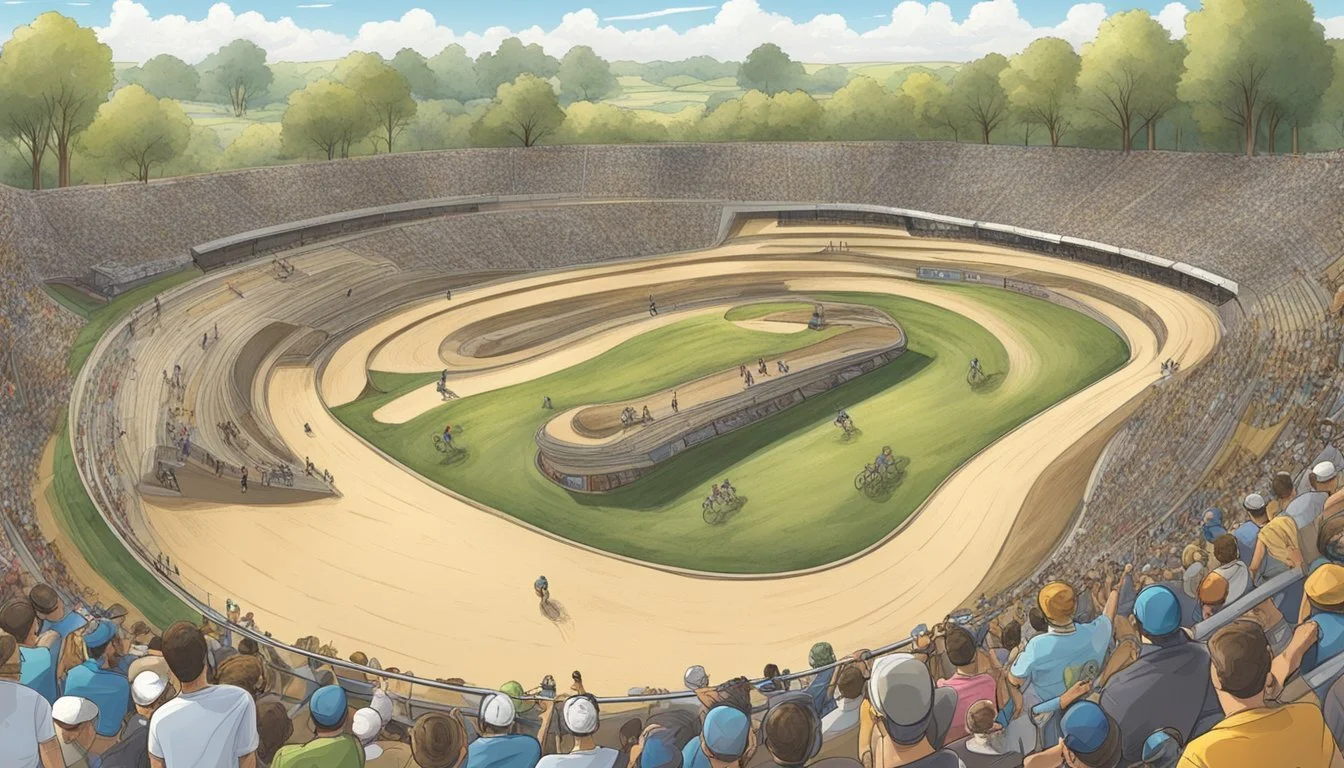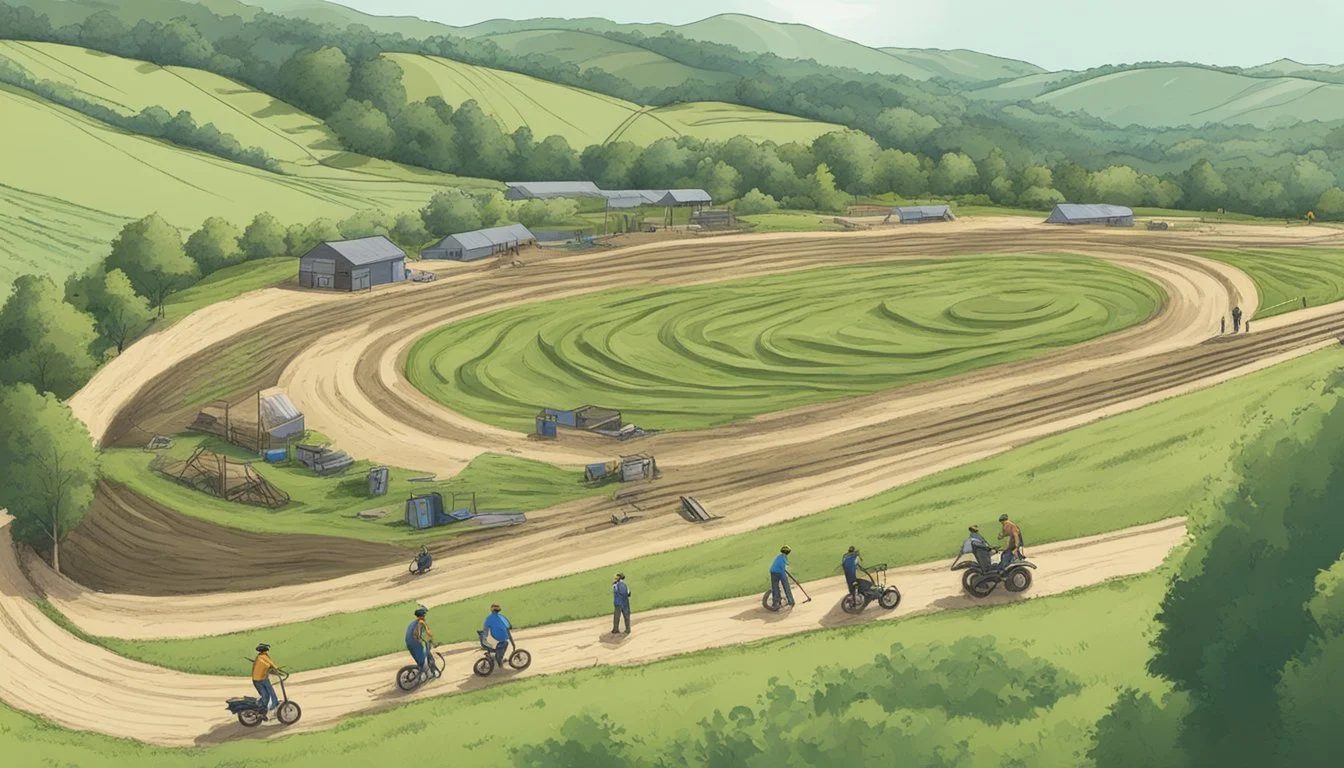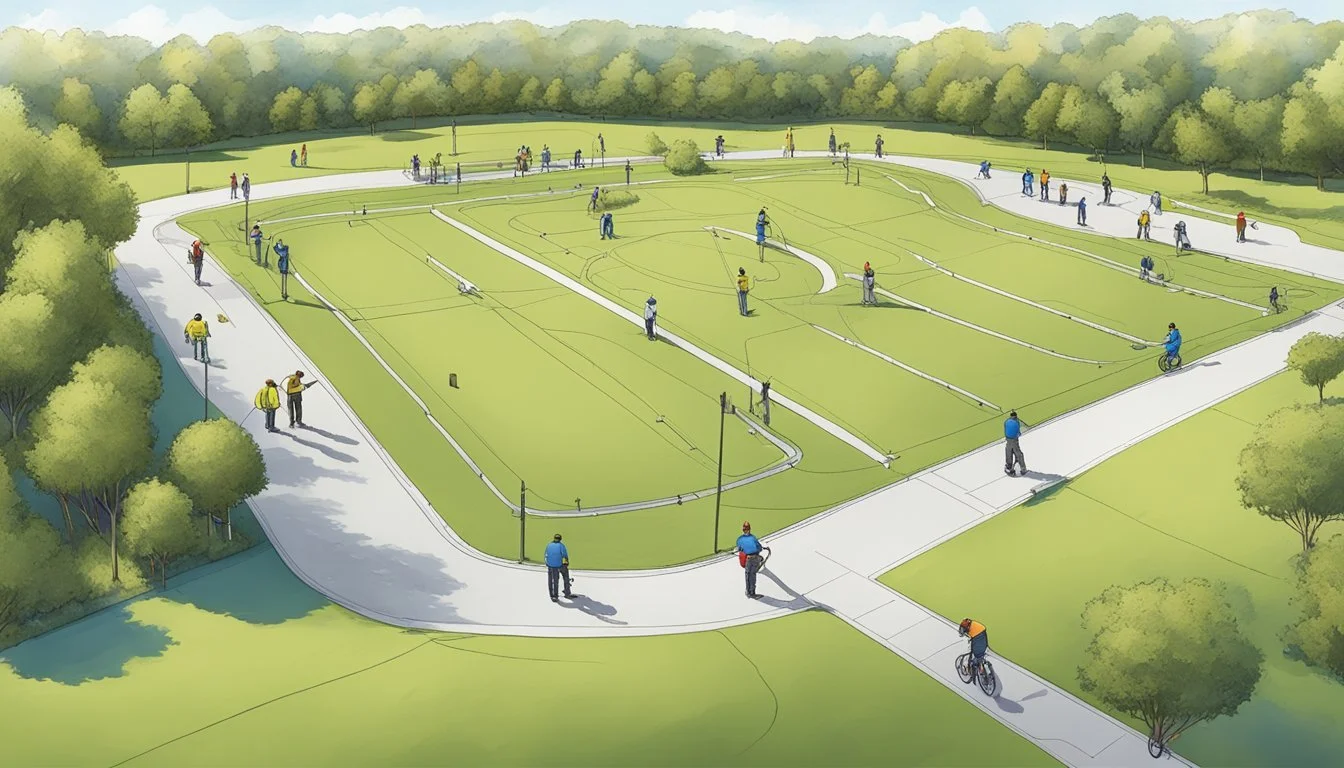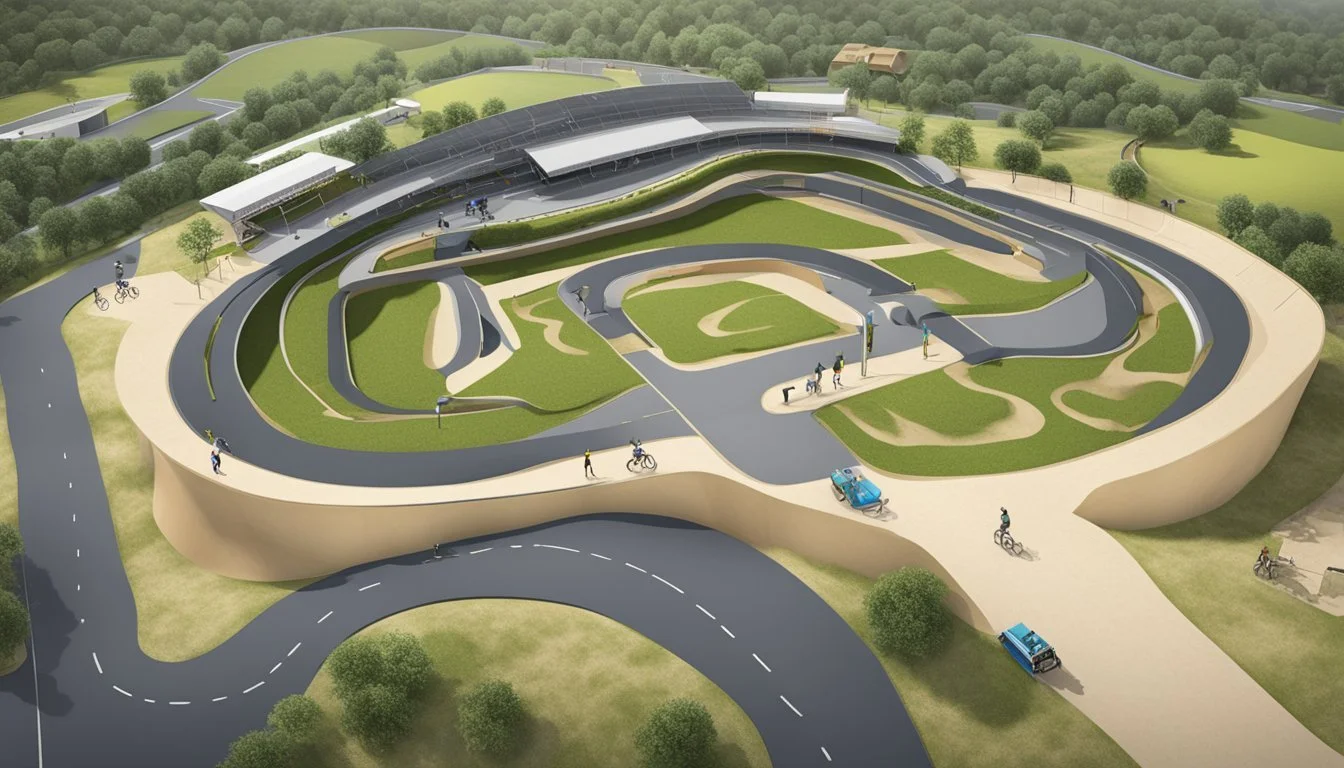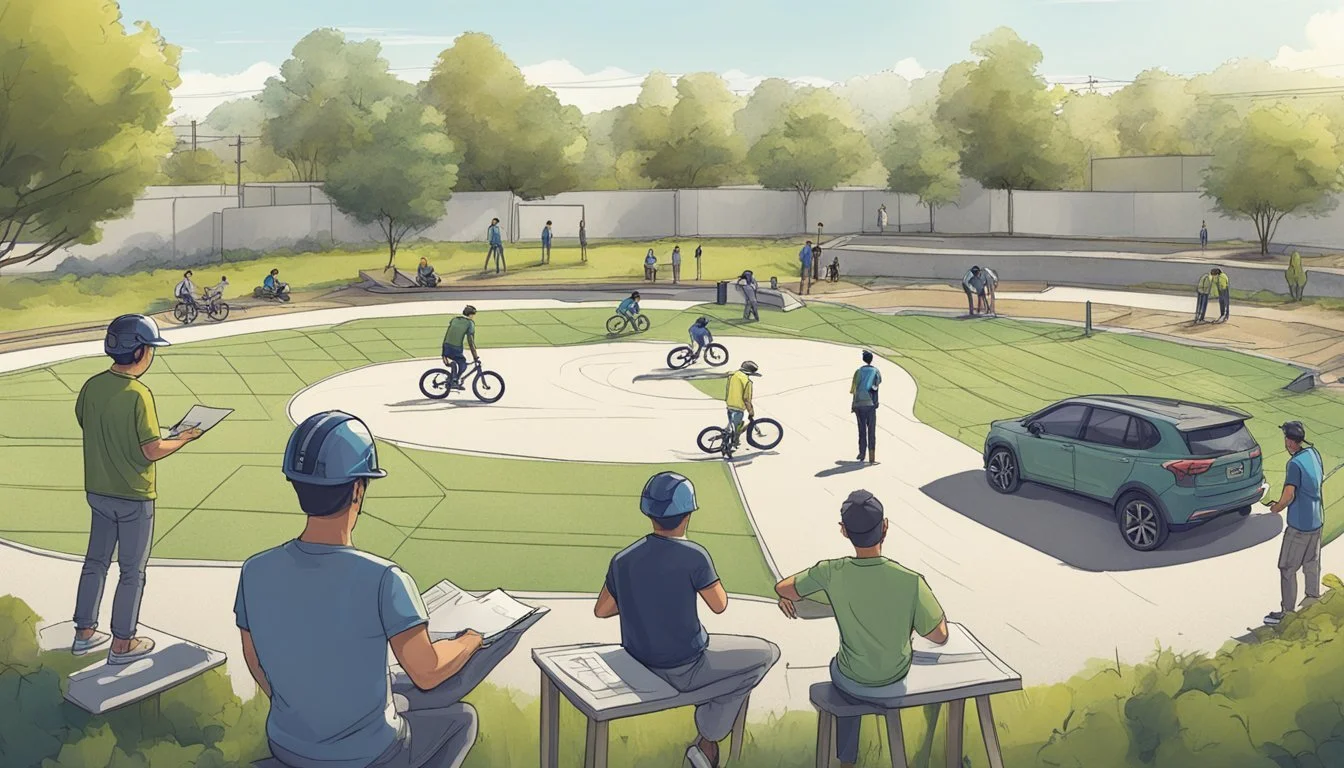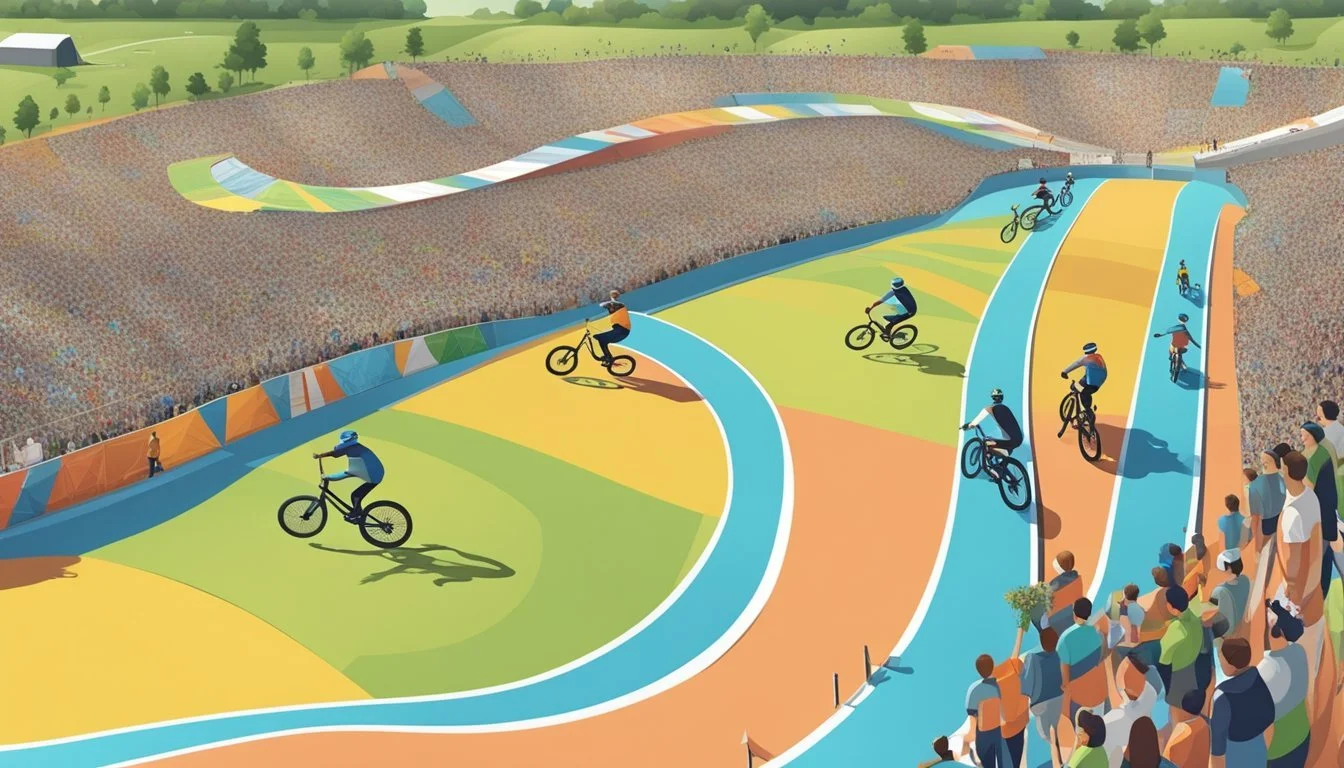Free Land for BMX Tracks
Expanding Extreme Sports Communities
Securing free land for BMX tracks can significantly impact the development of extreme sports areas. Jasper County, SC's recent $750,000 grant to purchase land for a new USA BMX-sanctioned track highlights the growing interest in providing dedicated spaces for BMX enthusiasts. This initiative will not only encourage local participation but also attract BMX enthusiasts from across the globe, boosting the area's recreational appeal.
BMX tracks are essential for the progression of extreme sports. They offer a controlled environment where riders can develop their skills and host competitive events. In North America alone, the American Bicycle Association (ABA) oversees more than 300 sanctioned BMX tracks, demonstrating the widespread interest and community support for these facilities.
Free land allocation for these tracks also promotes active lifestyles among residents. With projects like "Jasper on the Move" in South Carolina, communities are embracing the benefits of extreme sports. The establishment of such tracks fosters a sense of community while nurturing the next generation of extreme sports athletes.
The Rise of BMX Racing and Tracks in the United States
BMX racing found its roots in Southern California during the early 1970s and quickly gained popularity. This section covers the evolution of BMX racing, its influence on cycling culture, and the significant events that have shaped its prominence.
History and Popularity of BMX
BMX racing emerged in the early 1970s in Southern California, inspired by motocross. Initially, kids adapted their bicycles for off-road racing, creating an entirely new sport. These early tracks were often improvised, utilizing vacant lots and making use of Schwinn Stingray bikes.
The National Bicycle League (NBL) and National Bicycle Association (NBA) played crucial roles in formalizing and promoting BMX racing in the U.S. from mid-1970s. Organized races encouraged a more structured sport, leading to widespread popularity and the construction of dedicated BMX tracks across the country.
The Role of BMX in Cycling Sport and Culture
BMX racing quickly became an integral part of the cycling world. Its influence extended beyond the tracks, shaping the culture of extreme sports in the United States. The discipline popularized off-road biking and stunts, pushing the boundaries of what could be done on a bicycle.
As BMX grew, it fostered a community of enthusiasts and athletes. The sport integrated into mainstream culture, influencing fashion, music, and media. Companies like ESPN helped bring BMX to a broader audience with events like the X Games, enhancing its cultural impact and mainstream acceptance.
Impact of Major Events on BMX Popularity
BMX racing garnered international recognition when it made its debut at the 2008 Beijing Olympic Games. This inclusion elevated the sport, bringing it to a global audience and increasing its legitimacy in the world of cycling.
The UCI BMX World Championships also played a significant role in boosting the sport's profile, providing a platform for the best riders from around the world to compete. These major events not only increased participation but also spurred the development of new and improved BMX tracks in the U.S.
Benefits of Developing Free BMX Tracks for Communities
Introducing free BMX tracks can significantly benefit communities by improving social cohesion, boosting local economies, and promoting active lifestyles for residents of all ages.
Enhanced Community Welfare and Cohesion
Free BMX tracks create spaces where residents can gather, engage, and build connections, fostering a sense of community. They provide a safe environment for children and teenagers to engage in physical activities, which can deter them from negative influences. Additionally, these tracks can serve as communal areas where families and groups can bond over shared interests. Public events, competitions, and clubs further strengthen community ties, creating a supportive network of BMX enthusiasts and local residents.
Economic and Recreational Opportunities
The establishment of BMX tracks presents significant economic benefits for local areas. Hosting BMX events and competitions attracts travelers and spectators, boosting local businesses such as shops, restaurants, and hotels. This can lead to job creation and economic growth. Furthermore, BMX tracks contribute recreational spaces that enrich the lives of residents, making the area more attractive for potential newcomers and investors. The initial investment in BMX facilities often pays off through increased community engagement and economic activity.
Promotion of a Healthy and Active Lifestyle
BMX tracks promote a healthy and active lifestyle by encouraging regular physical activity. Cyclists of all ages can improve their fitness, coordination, and mental health through exposure to outdoor exercise. For children, such facilities provide an alternative to sedentary activities, fostering lifelong habits of physical activity. The inclusive nature of BMX sports ensures that people from all backgrounds can participate, leading to a healthier and more vibrant community.
Finding and Acquiring Land for BMX Track Development
Identifying the right land and understanding land acquisition and zoning laws play crucial roles in BMX track construction. Each step requires careful consideration to ensure a smooth and viable development process.
Strategies for Public Land Search
When looking for land to build a BMX facility, public land often becomes a primary focus. Public land can sometimes be easier to acquire than private land due to governmental programs supporting community fitness projects.
One method involves collaborating with local Parks and Recreation Departments. They frequently allocate land for public sports facilities. Counties such as Jasper in South Carolina have successfully secured grants for land purchase, working with state departments.
Community involvement is another effective approach. Engaging local stakeholders can generate support and identify potential public land options. Surveys and town hall meetings often reveal viable locations not previously considered. Moreover, aligning the project with local health and activity initiatives increases the likelihood of securing land.
Navigating Land Acquisition and Zoning Laws
Acquiring land for a BMX track involves navigating a complex landscape of acquisition processes and zoning laws. Understanding these regulations is essential to avoid legal hassles down the road.
First, stakeholders must conduct thorough due diligence on potential land parcels. This includes verifying ownership, existing land use, and any restrictions. Engaging a real estate attorney or consultant can streamline this process and ensure compliance with local laws.
Zoning laws present another challenge. BMX tracks typically fall under recreational zoning, which might require rezoning or special permits. It's essential to work closely with city planners and zoning boards to gain necessary approvals. Having detailed plans and community backing can significantly influence the approval process.
In regions like Tulsa, where community health initiatives are supported, zoning adjustments for sports facilities may be more attainable. This cooperation ensures the appropriate legal framework is in place for successful BMX track development.
Planning and Designing a BMX Track
Designing a BMX track requires a strategic approach, balancing space constraints and regulatory compliance, while integrating innovative elements to foster exciting racing experiences. This section covers essential aspects of planning and building BMX tracks, focusing on critical design elements and technical guidelines.
Key Aspects of BMX Track Design
Effective BMX track design involves careful consideration of space, layout, and flow. Tracks typically measure around 120m long by 70m wide. Builders should also account for additional areas for spectators, parking, and access routes.
Terrain selection is crucial; a well-drained, firm base ensures durability and safety. Designers include start hills, berms, and straights to maintain challenging courses. Each feature must be calibrated to provide momentum and thrill.
Collaborating with experienced professionals who understand BMX culture can aid in creating tracks that meet high standards while encouraging rider development and competition.
Technical Specifications for Competitive Tracks
BMX tracks for competitive events must adhere to the UCI (Union Cycliste Internationale) guidelines. These guidelines ensure that tracks are not only safe but also standardized for fairness and consistency.
Tracks should feature a start hill that can be either 5m or 8m high, and merge into a straight section. Berms or banked turns must have a sufficient gradient to allow riders to maintain speed without compromising control. The track elevation from start to finish must be consistent to avoid unexpected difficulties for riders.
Mandatory measurements include minimum width and specific lengths for straights and turns. These precise criteria help maintain a level playing field across different events and locations.
Innovations in Pump Track Design
Pump tracks represent a growing trend within BMX and broader cycling communities. Unlike traditional BMX tracks designed primarily for racing, pump tracks emphasize maneuverability and rhythm, allowing riders to generate speed through pumping motions rather than pedaling.
Modern pump tracks incorporate modular designs, which allow easy adjustment and reconfiguration. Materials like asphalt provide a smoother, more durable surface compared to classic dirt tracks.
Additionally, multi-use features cater to a variety of skill levels and cycling disciplines, potentially attracting a broader audience. These innovative designs use 3D modeling and cutting-edge construction techniques to create tracks that are engaging, challenging, and accessible to all.
Funding and Budget Management for BMX Track Projects
Proper funding and budget management are crucial for the successful completion of BMX track projects. This section explores the available funding opportunities and effective strategies for budget planning, ensuring resources are allocated efficiently.
Exploring Funding Opportunities and Grants
Securing funding for BMX track construction requires exploring various opportunities. Grants from state departments, such as the $750,000 grant Jasper County received from the South Carolina Department of Parks, Recreation and Tourism, can significantly aid in obtaining necessary financial resources.
Additionally, local and national sports organizations often have funds allocated to encourage sports development. Sponsorships from private corporations and partnerships with community organizations can also provide substantial support. Fundraising events and community drives further contribute to gathering the required capital for track projects.
Effective Budget Planning for Track Construction
Effective budget planning involves detailed estimation and allocation of funds across various stages of construction. Initially, land acquisition costs must be considered, followed by expenses for designing and planning the track. Construction costs, including materials and labor, need careful accounting to avoid overspending.
Tracking expenditure through each phase ensures financial resources are used effectively. An emergency fund within the budget helps manage unexpected costs. Using a detailed budget table enables transparent and efficient fund management, supporting the long-term sustainability of the BMX track project.
Construction and Building of BMX Tracks
Constructing and building BMX tracks require careful planning, the right materials, and a strong focus on safety standards. Successful track construction ensures a mix of challenge, safety, and adherence to industry standards.
Materials and Equipment Needed
Key materials include compressed topsoil, asphalt, concrete, and specific drainage systems. Compressed topsoil can be used in certain situations to reduce costs. Asphalt and concrete are often used for starting ramps and berms. Proper electrical conduits and water pipes are essential for any services required on-site.
Equipment necessary includes bulldozers, excavators, and compactors. These types of machinery help in shaping the track's layout. Specialized tools like laser levels ensure track segments are even and adhere to design specifications.
Understanding the Construction Process
The construction process starts with the design phase, followed by the installation of essential services such as drainage, electric, and water pipes. These systems help manage rainwater and maintain track integrity.
Next, ground preparation involves grading and compacting the soil to create a stable base. Starting ramps are installed, followed by the construction of straights and berms. Finally, surfaces are coated or layered according to specific material requirements. The process needs meticulous attention to detail to ensure safety and functionality.
Addressing Safety and Quality Standards
Safety is paramount in BMX track construction. Tracks should be built adhering to the Union Cycliste Internationale (UCI) guidelines, which specify widths, elevation, and ramp standards. These guidelines aim to balance challenge and safety, minimizing risks for riders.
Protective gear such as helmets and pads should always be used during construction and while riding. Regular inspections and maintenance ensure the track remains safe and in good condition. Quality standards cover everything from the initial build to ongoing maintenance, ensuring a long-lasting and safe facility.
Operational Considerations for BMX Tracks
Proper operation of BMX tracks involves maintaining the facilities, ensuring safety, and creating an inclusive and enjoyable environment for all visitors.
Maintenance and Upkeep of Tracks and Facilities
Regular maintenance of BMX tracks is crucial for both performance and safety. Track surfaces should be inspected daily for damage or debris. This includes filling in ruts and smoothing out bumps to ensure a smooth ride.
Drainage systems must be checked and cleared regularly to prevent water accumulation that can lead to erosion or unsafe riding conditions. Additionally, lighting and electrical systems need to be maintained to provide visibility and safety during evening events.
Facility buildings like restrooms, changing rooms, and observation areas should be cleaned and restocked with necessary supplies. Moreover, landscaping around the track must be managed to keep the entire area presentable and safe from overgrown plants that could obstruct views or paths.
The Significance of Safety Gear and Regulations
Safety is paramount in BMX riding. Riders are required to wear helmets, gloves, knee and elbow pads, and appropriate footwear. Tracks must enforce these requirements rigorously.
Track design should comply with international guidelines, such as those from the UCI, to ensure it meets safety standards. Clear signage indicating track rules and directions helps prevent accidents and miscommunication.
Regular safety briefings and training sessions should be conducted for staff and riders to keep everyone informed of the latest safety practices. Adequate medical facilities and first-aid kits need to be readily available for rapid response to any injuries.
Creating a Welcoming Environment for Visitors
A positive visitor experience can significantly impact the success of a BMX track. Customer service staff should be friendly and knowledgeable, providing assistance and answering questions promptly. Programs for all ages and skill levels, including beginners, make the track accessible to a wider audience.
Events and competitions should be well-organized and publicized to attract participants and spectators. Offering amenities like seating areas, food and beverage options, and merchandise can enhance the visitor experience.
Feedback mechanisms such as suggestion boxes or online surveys help operators understand visitor needs and continuously improve the facility. Building a strong community vibe through regular events and engagement can foster loyalty and repeated visits.
Challenges and Solutions in Developing BMX Tracks
Developing BMX tracks involves a series of challenges that need to be carefully navigated. Key areas of focus include community concerns, environmental impact, and regulatory compliance.
Addressing Concerns of Local Residents and Businesses
Communication with local residents and businesses is crucial. They might be worried about increased noise levels, traffic congestion, or property values. Organizers should hold public forums to discuss the benefits and address these concerns. Traffic management plans can be implemented to minimize congestion. Additionally, offering economic incentives, such as potential increases in local business through BMX events, can help garner support.
Residents may also worry about noise pollution. Solutions include sound barriers and scheduling events during less disruptive times. Each approach aims to build a positive relationship with the community.
Environmental Considerations and Sustainability Practices
Environmental impact is a key concern. Before construction, environmental assessments should be conducted to understand potential effects on local wildlife and natural resources. Implementing sustainable practices is essential, such as using eco-friendly materials and methods to reduce carbon footprints.
Water management is another critical aspect. Installing efficient drainage systems mitigates waterlogging and impacts on surrounding areas. Green spaces integrated into track designs preserve biodiversity. These steps align the project with broader sustainability goals, ensuring long-term environmental health.
Regulatory Hurdles and How to Overcome Them
Navigating regulatory requirements can be complex. Local zoning laws, safety standards, and construction permits need to be addressed. It's essential to engage with regulatory bodies early in the planning process. Doing so ensures compliance with local and national policies.
A detailed project proposal that includes safety plans, environmental assessments, and community benefits can streamline approval processes. Partnering with legal experts familiar with sports infrastructure regulations helps avoid delays. Meeting these requirements not only facilitates project approval but also builds trust with the community and authorities.
By tackling these challenges methodically, BMX track developers can create facilities that are safe, environmentally friendly, and embraced by the local community.
Marketing and Promoting BMX Tracks for Maximum Engagement
Engaging a wide audience in BMX racing involves strategic marketing efforts to attract both seasoned enthusiasts and new riders. Hosting competitions and events enhances visibility and fosters community spirit.
Strategies for Attracting BMX Enthusiasts and New Riders
To attract BMX enthusiasts and new riders, implementing targeted marketing strategies is crucial. Collaborating with local schools, sports clubs, and community centers helps spread awareness about the track. Offering introductory sessions and free riding lessons can entice newbies to give BMX racing a try.
Creating a strong online presence through social media platforms like Instagram and Facebook can showcase the track’s amenities and upcoming events. High-quality images and videos of races can generate excitement and anticipation. Engaging current riders to share their experiences online also amplifies outreach.
Investing in traditional advertising, such as posters and flyers in local shops and facilities, ensures visibility among different demographic groups. Highlighting the track’s unique features, safety measures, and affordable pricing in promotional material can appeal to families and individuals alike.
Hosting Competitions and Events
Hosting regular competitions and events at the BMX track can significantly boost engagement. Organizing local, regional, and national races attracts a diverse group of participants and spectators. These events can be marketed through local newspapers, radio stations, and biking magazines to reach a wider audience.
Events should feature varied categories to cater to all skill levels, from beginners to experts. Offering prizes and recognition for top performers adds motivation for participants to engage. Partnering with sponsors can provide financial support and enhance the track’s reputation.
Community events such as open days and charity races foster camaraderie and encourage local involvement. Collaborating with local businesses for food stalls and entertainment options can create a festive atmosphere that appeals to families and friends, making the track a central hub of community activity.

